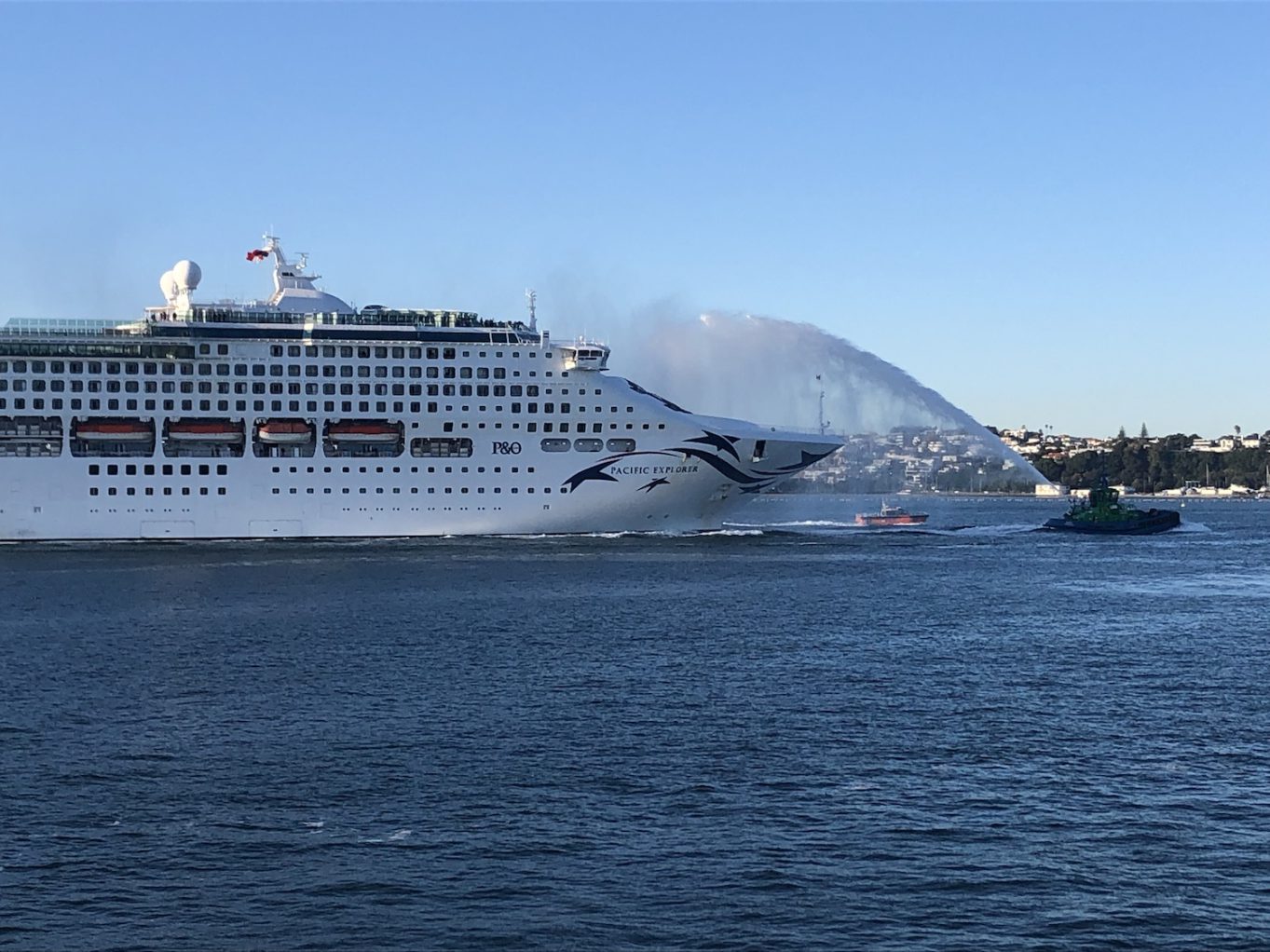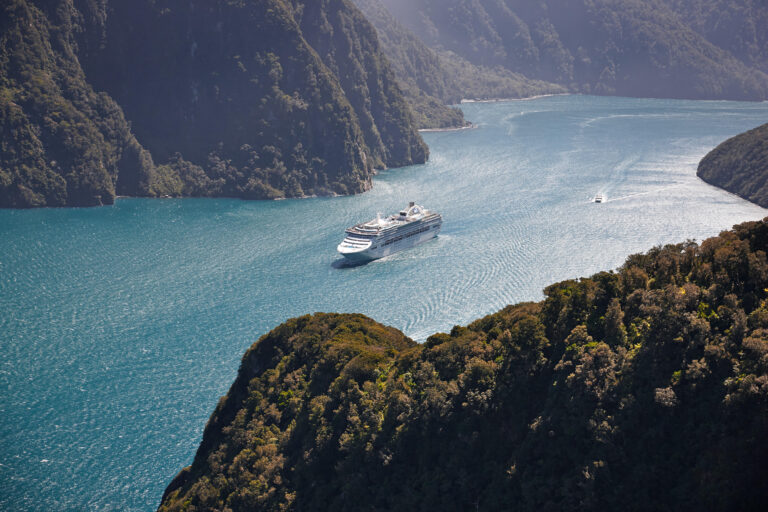Cruise lines are likely to cut calls to New Zealand ports over tough hull cleaning regulations which caused many to be turned away in 2023.
The move will mean Australia’s second most popular destination will see a dramatic reduction in capacity, making it more difficult to book cruises to a destination that has long held a special place among local cruisers.
Cruising Lines International Association managing director in Australasia Joel Katz is warning that without action from government, ports and destinations, New Zealand is set to see a steep decline in cruising.
Part of the problem with meeting biosecurity regulations on hull cleaning is that, while lines are willing to comply, they can’t find anywhere to carry out the work regularly in an area that isn’t weather dependent.
New Zealand rebounded extremely strongly from its cruising ban. It shows industry recovery in line with global figures. However, the forecast for the season ahead isn’t looking quite as positive.
The concerning data shows that according to published port scheduling, the number of port visits could drop by up to 25% in some ports.
At a Seatrade conference in Miami, New Zealand Cruise Association chief executive Jacqui Lloyd said she estimated a reduced 150 – 200 port calls over the coming season. This estimation equates to around 54,000 fewer passengers. This represents a 15% decrease in total passengers from the previous season. And this should be in a time of industry growth and recovery.
Mr Katz said: “New Zealand is moving backward in terms of deployment. And that is driven by high port costs and the regulatory complexity of operating in the region.
“It is putting continued growth under pressure. While we know the demand is recovering well, we are concerned that the supply is contracting.”
Why we need more cruise in New Zealand

Katz says industry and government collaboration is required to ensure the cruise industry thrives in New Zealand.
“Although cruising has rebounded internationally, close collaboration is needed in New Zealand to address an anticipated decline in future cruise capacity and support the sustainability of cruise tourism into the future.
“New Zealand is a highly sought-after cruise destination. And Kiwis have shown a passion for cruising in their backyard. But the right settings must be in place to ensure New Zealand is internationally competitive.“
“Collaboration among government, ports, and destinations is vital. This is along with balanced regulation and reasonable costs to fostering a thriving cruise economy in New Zealand.”
Oscar Nathan, general manager of Tourism Bay of Plenty, told the NZ Herald that the Port of Tauranga is currently set for a 23% drop in cruise ship visits.
“The New Zealand Cruise Association has noted there has been a significant drop in the number of port calls that are being estimated for the country’s 2024-25 season. In turn, has impacted the number of cruise ships that we can expect to welcome into Tauranga Harbour.
“Tauranga remains a popular destination for passengers. And most are usually highly satisfied with their onshore experiences while they are here. That’s presumably why our region’s share of the cruise ship bookings, compared to other New Zealand ports, is holding steady.”
The biofouling factor

Over the past two cruise seasons, it has been widely publicised that some cruise ships have struggled to get into New Zealand. All due to strict policing of hull cleaning to ensure the environmental conservation of the country’s national parks.
While fewer ships were turned away from New Zealand in the season just ended than in 2022/2023, hull cleaning is an expensive service for ships. It could be speculated as a contributing factor to the reduced port calls in the region.
Paul Hallett, Biosecurity New Zealand’s manager of environmental health says there has been an improvement in cruise line compliance. But over the previous season, there was still a total of six ships that had planned visits to New Zealand that didn’t eventuate due to the biofouling rules.
Hallett says: “There has been a lot of effort since the last season to alert cruise lines about their biosecurity requirements, including ensuring they comply with New Zealand’s biofouling rules. As a result, we have seen high levels of compliance this season. Biosecurity New Zealand staff engaged regularly with cruise operators to ensure their vessels arrive with clean hulls.
What happened last cruise season
“Of the 54 vessels that visited New Zealand this summer, there were only five non-compliant vessels. They had their itineraries restricted and were subject to further education. One vessel did not travel to New Zealand. The operator did attempt to clean the hull and specifically the areas of concern, before it abandoned cleaning due to bad weather and chose to cancel the New Zealand leg of the journey which was due to begin 23 November 2023. In the 2022/23 season, 11 vessels failed the assessment.
“We cannot comment about individual cruise line operators. However, Biosecurity New Zealand has worked closely with cruise companies to help them understand and meet our biofouling rules. These are among the strongest in the world for good reason. They ensure visitors and New Zealanders will enjoy our special marine areas, such as Fiordland, for generations to come. We’ve had some new cruise providers arrive in New Zealand this year and they’ve adapted well to meeting our requirements.”










My feelings is it is better to visit NZ on a land self drive, tour or using rail or bus journeys. It’s a compact country, no language problems. So close.
I’m wondering how some lines have no problem in cleaning their ships to comply with NZ’s bio-security requirements yet others find it such an inconvenience?
Bio Security has worked closely with cruise companies and still there is projected to be up to a 25% drop in port days. Doesnt seem they were very successful in their “further education” does it ? I trust they feel smug with their efforts so far in resolving the issue. New Zealand should proud knowing they are doing their best in killing our cruise industry. SORT IT OUT before we are totally isolated.
We are on the Diamond Princess cruising around NZ mid November, I notice we are bypassing Tauranga as a few other Princess cruises are, we are very disappointed. Do you know why ?
Maybe NZ could provide a suitable place, conduct it to their standards, bill the cruise line and then let them enter!
Given the number of sheltered locations in Australia that can take large vessels it sounds like a nice earner for someone with the wherewithal to get into it, a bit surprised someone isn’t having a go.
Why do cruise companies, and cruisers, think it’s their right to visit somewhere?
NZ has always had strict biosecurity laws. If cruise lines can’t meet them then tough.
Some cities and towns don’t want cruise ships to visit. I know! Shocked. Sure some specific businesses want cruise ships to visit, but the general population of some definitely don’t. Case in point – Venice.